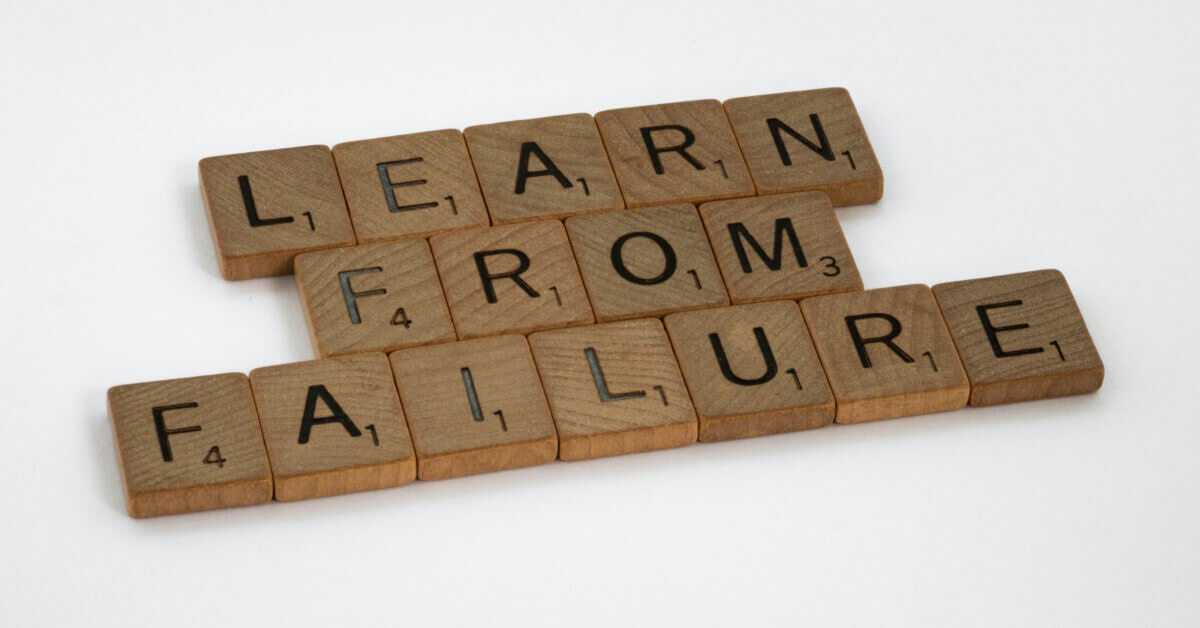Jason’s Tips
Content Creation: Batching Your Tasks
Content Creation: Batching Your Tasks

Content creation is hard work, especially when it comes to written content. It doesn’t matter whether you’re writing the content yourself, or someone else is doing it for you. Ultimately, someone has to sit down and put pen to paper… or words to screen.
If you approach content creation in a linear fashion, it will take you much longer because you’ll constantly be switching between tasks.
For example, writing and editing are 2 different processes. If you edit as you write, your creative process will be jarred, and you’ll not achieve a state of ‘flow’ which is what most writers strive for.
The best way to stay organized and speed up content creation will be to batch your tasks. Below you’ll find 7 tasks to batch.
Why Is Batching So Effective?

Batching is basically grouping similar tasks and doing them all at one go. It’s almost as if you’re in an assembly line at a factory repeating the same task over and over.
This will not only increase your speed, but you’ll find it easier to focus on the task too. You won’t need to constantly go back and forth between tasks.
That’s when the speed truly builds up and you’ll make up for lost time and more. Now let’s see how to batch your tasks.
Decide On Your Task For The Day

Content creation generally revolves around 5 tasks:
- Researching
- Outlining
- Writing
- Editing
- Publishing
You do NOT want to do them all in one day. So what you’ll do is decide what task you’ll do for the day. Ideally, you’ll want to complete all the work associated for a specific task before moving on to the next one.
For example, you might decide to spend Monday and Tuesday doing research. Wednesday may be for outlining. And from Thursday to Saturday, you’ll write like a maniac.
On Saturday, you’ll edit and proofread what you wrote… and on Sunday, you’ll publish the content.
This is just a general idea. Decide for yourself what you’ll do each day and only focus on that task.
Work In Pre-Determined Time Blocks

The next step will be to decide WHEN you’ll do the work. You don’t want to adopt a haphazard approach to content creation – or you’ll never get the job done.
Decide on a time block when you’ll begin and end the task. For example, you may decide to do your research from 9am to 11am. That’s fine. Just make sure you stick to it.
The best way to overcome this problem will be to sit down at your desk at the specified time, whether you like it or not… and give yourself just 2 minutes to write. Anyone can do that.
You’ll realize that once you start, most of the time you’ll keep going. Use this technique and you’ll trick your mind into being less resistant to the task at hand.
Do Your Research

In step #3, you’ll do ALL the research you’ll need for you to write later on.
This is especially important for non-fiction. Keep your research notes organized so that you can refer to them easily.
Remember to create a customer avatar of your ideal prospect; this way you can write all your content in a way that is incredibly appealing to him or her and you will be much more likely to get them to take a particular action (you are adding a call-to-action in your content, right?).
Outline Your Content

Having an outline will increase your writing speed exponentially. Of course, your outlines will be based on the research you’ve done.
Make a list of the points you’ll cover and so on. Even if you’re typing on a computer, having your outlines written on paper in front you is recommended.
In this way, you can glance at your outline as you type rather than switching between tabs and so on.
Write Like A Maniac

This is where the pedal hits the metal, and the rubber meets the road. Once your outlines are all ready, start writing your content.
There’s a saying – “Write drunk. Edit sober.”
So when you write, just let your thoughts and words flow. Don’t be overly concerned about typos, etc. The goal is to get the content written.
Even if you’re creating content for infographics, social media posts, sales copy, etc. this principle will apply. Write first… and churn out ALL the content that you need to complete!
Take Time To Edit

Once all your content is done, it’s time to edit the content and fix the errors such as spelling/grammar mistakes, sentence construction issues, typos, etc.
This may seem an onerous task, but it can have a significant impact on the final piece of content, so can’t be overlooked.
Publish Your Content

This is the most fun part of the lot. You’ll either be publishing the content on your blog or turning it into a digital product to sell. You might have other plans for it, but the principle stays the same.
Publish your content when it’s all completed. A common mistake beginners make is to create 1 piece of content, do all the steps above… publish it… and then run off to repeat the process with the next piece of content.
Can you even imagine how tiring and time consuming that will be?
By now you’ll realize that while batching your tasks seems to be a more delayed approach, it’s actually faster when you look at the big picture.
Adopt the pointers in this article and you’ll be a lean, mean, content creating machine.
If you really want to know more about the power of content marketing and blogging, you can take a look at the Rapid Blogging Blueprint training course or if you just want a few pointers for now you can grab the featured resource below for a free detailed blogging report; download, read it and take action 🙂

7 Common Misconceptions About Finding Your Purpose
7 Common Misconceptions About Finding Your Purpose

Finding one’s purpose in life can sound like a deep and complicated task. To make matters more convoluted, you’ll probably have beliefs that were foisted upon you since childhood, either by your parents or other adults.
Following your passion by finding your ‘why’ or purpose is something pretty much every human being aspire to, because it promises a life of fulfilment because you re truly doing what you want to do.
The truth of the matter is that finding one’s purpose is a simple process of thoughtful introspection. Once you dispel the misconceptions and lies that surround this topic, you’ll find things much simpler.
Let’s look at the common misconceptions…
You Have To Create It

You don’t have to create your purpose. It already exists. You just need to find it… and you’ll only find it by asking yourself introspective questions about what makes you truly happy and fulfilled.
But what if that’s not what you want? What if you only want an income that’s comfortable but you want more free time to volunteer and make a difference to your community.
Then that might be your purpose. Your purpose is determined by your feelings and desires. Not goals or external influences.
Everyone Only Has One Purpose

Different people are born with different talents and desires. Some people may be good writers and sing well too. They may excel at both talents and they’ll need to choose one that they feel they were ‘born to do’.
You’re not only given ‘one purpose’. Your purpose in life may change as your belief systems change. What you thought was important once, may seem trivial now.
For example, you may have loved surfing before and felt that it was your purpose to ride the waves and become a surfing instructor. However, a trip to an African village may have made you feel blessed and suddenly now, you think that surfing is no longer that important.
You’d rather volunteer and help the less fortunate in the village. You get more satisfaction and a sense of achievement that you never had before. This could be the missing piece in your life.
Your purpose is closely linked to what you feel is important to you and what motivates you to get up daily and get going with enthusiasm.
Some ‘Callings’ Are Better Than Others

Measuring your purpose against other peoples’ achievements is a pointless and depressing endeavor. You may be a painter who creates magnificent works of art. But if you compare yourself with a doctor who saves lives, you may feel like painting is trivial in comparison.
However, what you fail to realize is that your art brings joy and wonder to many people – from the person who buys your art to everyone else who gazes upon it.
No one purpose is better or more rewarding than the other. All that matters is that you do what’s right for you.
It MUST Be Your Job

Your purpose doesn’t have to be your job. A lady may be a waitress at a café, but feel like her purpose in life is to raise well-balanced children who grow up to be successful adults.
On the other hand, another lady may be more career-oriented and feel that her purpose in life is to grow her company so that it positively affects thousands of lives while making millions of dollars in return.
Your purpose is not tied to dollars and cents. It’s not your job, your career or your achievements. It’s more subtle than that.
It Requires Immense Sacrifice And Pain

If you need to struggle and force yourself to sacrifice for it, it probably isn’t your purpose. Very often, when you discover your purpose, there will be a sense of excitement and ease to it.
Discovering and following your purpose in life is a pleasant process and while it may be challenging, it shouldn’t be depressing or cause you to despair.
You Need To Be Religious

Purpose doesn’t have anything to do with your religion. While millions of people claim to have discovered their purpose in life after ‘finding God’, this is not a necessity.
Finding your purpose is a personal journey towards self-discovery. You can go the spiritual route, or you can self-reflect and do some journaling until you realize what it is you truly want to do. Therein lies your purpose.
It’s A Non-Profit Endeavor

You don’t need to be a solitary monk eking out a meagre existence on the mountain top just to be on purpose. You can be a millionaire too and still feel like you’re following your calling.
For example, a successful plastic surgeon who makes millions may truly love what he does. He enjoys enhancing his clients’ appearances and seeing the happiness and increased confidence in the patients once they see the results.
By helping others, the surgeon feels like he’s living with purpose. Since plastic surgery requires a high level of skill, he charges accordingly and his wealth is a by-product of his efforts.
And this training proves that!
These 7 misconceptions are just the tip of the iceberg. There are many others out there.
What’s most important is that you realize that discovering your purpose is a journey that’s done inside you – and has nothing to do with the distractions/expectations of the world outside you.
Once you understand this, you’ll find your purpose and shine.
“The meaning of life is to find your gift. The purpose of life is to give it away.”
– Pablo Picasso
As you probably already know, having a strong mindset is critical to any attempt to finding your purpose and passion and staying focused on them, so click on the featured resource below to get a free report on how to develop a strong mindset. Download, it read and take action 😊

Is Your Self Doubt Due To Your Previous Failures?
Is Your Self Doubt Due To Your Previous Failures?

How many times do you think Thomas Edison failed in his attempt to bring light into our lives by inventing the lightbulb? Likely, he failed more times than we can count. Imagine how he felt when he worked so hard (during daylight hours or by candlelight) to find something that worked, came so close each time – and then failed with each attempt.
Then, finally it happened. One path Edison took led to the invention of the lightbulb and all other attempts were forgotten. We’ve been bathed in iridescence ever since. Edison and other successful entrepreneurs have all suffered from self doubt but trudged on through the lack of confidence to make their dream a reality.
Think about the times in the past (even as a child) that you’ve persevered through disabling doubts that you could do something, only to find out that it wasn’t within your grasp even though you gave it your all.
Either you shrugged and went on to something else or withered away in self-pity that prevented you from possible future successes. Virtually every successful person in the world has failed many times before.
Rather than wasting time stewing over each failure and making yourself miserable, make a firm decision to move on – and then do it. Begin on the new project immediately by setting short and long-term goals and really dig deep into how you’re going to ensure it’s a big success.
Each success will spur you on to the next project – and the next, until you have some firm accomplishments under your belt. Next time a failure happens, you can focus on the successes you’ve had to break the cycle of self-doubt and begin again.
Before you begin a project or new venture, think about all of the possible scenarios that can happen. Make sure you include the worst-case scenarios along with the rewards that will happen when you succeed.
After you face your fears of “what if,” you can use those fears as challenges. Looking at fears as challenges rather than obstacles can only help boost your self-confidence and help you begin to see success in your future rather than failure.
Use Every Failure As An Opportunity To Learn And Grow

Most of us don’t think of failures as opportunities – but successful entrepreneurs know the secret to turning the knowledge learned in a failure into opportunities for growth and success.
Kids learn about winners and losers at an early age and may be taunted when playing sports or about the dismal results of a test. Some take the “loser” label and define their future self worth with it and are reluctant to take risks, while others become more determined to show everyone that they can win.
We hate the way failure makes us feel, but when we realize it’s not the end of the road and we have time to come back as a success, failure can actually be a learning experience.
What you learn from failure is invaluable to your future success. A close analysis of what went wrong with the failed idea or venture can help you make sense of the situation and learn lessons that will make you a true winner.
Every failure can be turned into a unique opportunity to grow and learn – and every success might be detrimental to future successes. It’s a contradiction that’s difficult to understand unless you’ve experienced both the opportunities in failure and the dangers in success.
Being honest with yourself is the first step in turning failures into opportunities and learning experiences. Blaming failure on others or making excuses can only serve to dig you further into a state of denial.
When that happens, you don’t learn anything. If you don’t use your failures to find flaws in your thinking or how you managed a product or venture you’re likely doomed to failure.
Learning from past mistakes is a trait that every successful person on this planet has profited from. Remember, that every failure you experience shows that you tried. If you never fail at anything, chances are you’re not trying hard enough to succeed.
While none of us seek to fail, the process of life and how it works condemns us to some failures along the way. Your success will come when you seek to learn how you failed and figure out what you’re going to do next time to ensure success.
Trying To Predict Success Sets You Up For Failure

Some of us tend to doubt ourselves right out of future success with “what if” predictions we make. It could be named the “what if” syndrome. It’s when you’re mired in self doubt so much that you begin to imagine and predict obstacles and outcomes that aren’t even there.
The “what if” syndrome is especially prevalent after you’ve hatched up a brilliant idea for an online project that’s going to make you lots of money and help your fellow entrepreneurs.
You’re sure everyone will love it and want it. Then, self-doubt sets in and you begin to think of all of the reasons why it won’t succeed. You walk on the shadowy side of your ability to make things happen and talk yourself down or out of even trying.
You were so excited about the idea at first and it fired up your creativity to a point where you could hardly wait to begin. That lull – somewhere between the excitement of the idea and taking action to make it happen – is where self doubt takes root.
You may begin to think of past failures and how they made you feel or become highly sensitive to the fact that you’ve never endeavored something like this before. If you keep thinking about past failures or what “might” happen, you may come to a point in the project where a big wall is placed in your path.
Or – you can take another route – one that doesn’t ensure success, but that at least gives you a chance. Rather than giving in to self doubt, trust yourself and try it again. You’ve likely practiced this scenario many times before in your life.
Some attempts may have failed, but you’ve probably succeeded many more times. Bring a new attitude into the mix and think positively rather than giving in to the hauntings of past failures. Also, bring in positive people to surround you who encourage, rather than discourage you.
Don’t compare yourself to others whose successes may be greater or more profitable than yours. You may even learn from their stories of success. They’re bound to have had failures along the way – and overcame them rather than feeling defeated.
When you find yourself become mired in self doubt about your future success, mute the negative voices by focusing on the positive and living in the present moment rather than projecting yourself into a future of unknowns.
Whatever you want in life will require discipline to achieve and being able to reframe failure is a small part of that. And if you want to know more about harnessing the power of self-discipline, then check out the featured resource below for a free detailed report; download, read it and take action 🙂
























